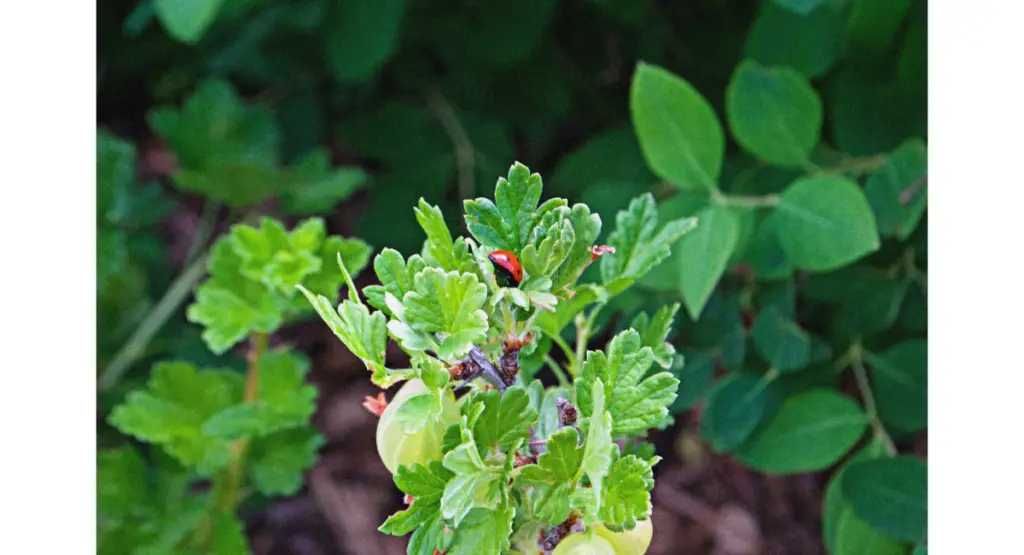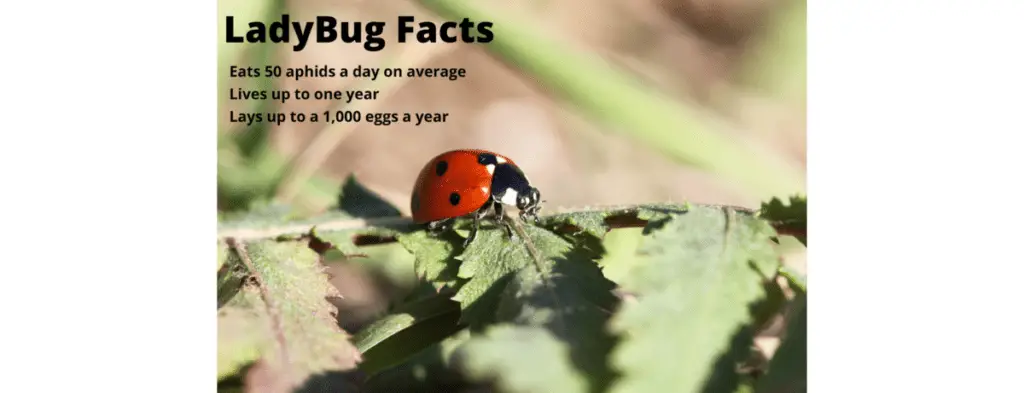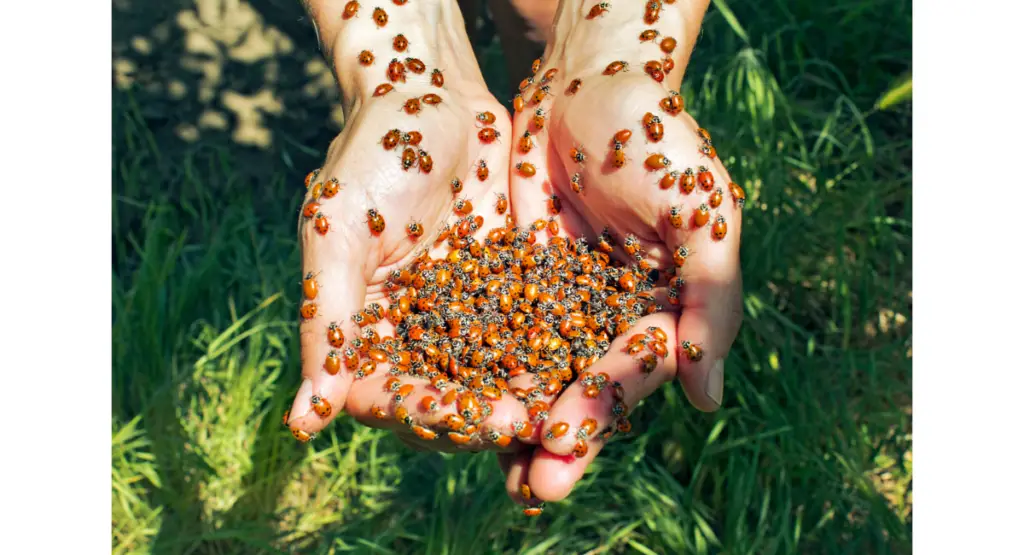
Where Can I Buy Ladybugs for My Garden?
One of the effective ways to deal with different types of pests in your garden is to place ladybugs. While they might not be effective against some pests, they are effective when it comes to eating aphids. If you have rose bushes, fruit trees, or even a vegetable garden, you may be aware of this. Learn more about the benefits of ladybugs in this post!
Luckily, the best way out of the situation is to buy ladybugs and place them in your garden. However, most people wonder: “Where to buy ladybugs for my garden?” If you have a similar question, the good news is that they are readily available, and it is very easy to purchase.
Most of the time, you can buy ladybugs from your local garden center. The best part is that they would keep the ladybugs in their stock all through spring and summer. Therefore, you won’t find trouble buying them. Apart from that, you can buy ladybugs from online stores as well. Four Brands of ladies bugs we like:

- Nature’s Good Guys
- Clark&Co Organic Live Ladybugs (paid link)
- Gardner Time Live Ladybugs
- Local Gardening center supply
How many ladybugs do I need for my garden- Releasing ladybugs

Typically, the number of ladybugs that you need for your garden depends on how big the garden is. The standard is to buy ladybugs depending on per square feet or square meters of the garden. For example a 1000 square feet or 93 square meters, could start with 2000 ladybugs. Below is a quick chart showing ladybugs per square foot.
| Garden In Square Feet | Ladybugs needed for garden |
| 200 | 400 |
| 400 | 800 |
| 600 | 1200 |
| 800 | 1600 |
| 1000 | 2000 |
| 1200 | 2400 |
| 1400 | 2800 |
| 1800 | 3600 |
| 2000 | 4000 |
When these bugs have adequate water and food, they would stay there and lay eggs within a few weeks. The best way to release them is in the evening. This is the time when it is calm in the garden. The ladybugs would have dew to drink.
The best way to do the job is to take a handful of ladybugs and sprinkle them around the base of plants. However, make sure that you see the pests on the plants. Furthermore, repeat the step every 20 feet or 6 meters.
How much ladybugs eat for pest control
Although the number of ladybugs that you need depends on the square feet area in your garden, there is another way to get the number. For small gardens, you may need around 2000 ladybugs. And, for a much bigger garden, you may need over 18,000 ladybugs.
As you know, ladybugs are insects that are beneficial for your garden. They are good for your garden because they can consume up to 50 aphids per day. Aphids feed on plants where they can transmit viruses to your plant.
Hence, the lower the aphids, the healthier your garden would be. Apart from that, ladybugs just don’t stop there. In addition, they would eat larvae and other insects such as moth eggs, mealy bugs, scales, whitefly, asparagus beetle larvae, mites, and leafhoppers. In general, ladybugs come to your garden naturally.
However, if you don’t like to wait for the ladybugs to arrive in your garden naturally and want to get the process done, you can buy at least a bag containing hundreds of these little soldiers. However, before you make up your mind to buy them from a local gardener or an online store, you have to consider something important.
Keep in mind to buy ladybugs belonging to native species. In addition, there are a few things you should do when it comes to releasing ladybugs. That way, the ladybugs would stick around in your garden for a long time. After the ladybugs arrive, put them in a cool place for the best part of the day.
As such, it would slow their metabolism for some time while placing them in a dormant state until you are ready to release them to the garden. One of the best ways to release them is during the evening. The garden should be soaked in water and have some aphids.
Release ladybugs
If you release them during the day or into a dry garden, chances are that they would fly away. When you release them during evening hours, they would find the right spot to settle and sleep for the night. In addition, ladybugs don’t fly in the dark.
It means that releasing them after sunset makes sure that they would stay in the garden for the night. When they would be hungry the next morning, they would start looking for delicious pests around them. Also, you can release the ladybugs in small amounts over the next two days. As a result, it increases your chances of keeping them around for a longer time.
How long will ladybugs stay in your garden?
Most people would want to know how long ladybugs stay in your garden. Ladybugs will stick around in your garden as long as they have a good food and water source. However, there are some ways through which you can encourage ladybugs to stay in your garden for a long time.
Typically, ladybugs would fly away within a few days. Around 95% of released ladybugs tend to fly away within the first forty-eight hours. The remaining ones that are left should be gone within the next four or five days. The chances of ladybugs laying eggs in the garden they are released are rare.
To encourage new ladybugs to stay in your garden while discouraging them to fly off to the neighbor’s house, there are a couple of things to do. When the ladybugs reach your destination, they are dehydrated. Therefore, a soaked garden provides the right condition for them to fulfill their thirst.
Also, you have to keep them in mind while spreading them in the garden. The idea is to release the ladybugs to a suitable environment where they can get water and food immediately. In addition, when they find aphids while drinking, most ladybugs would understand that the garden is the right place for them to stay.
Apart from that, there is another way through which you can make the ladybugs stay in the garden for some time. While ladybugs tend to eat pests like aphids, they eat the pollen found in certain types of plants that are common in many gardens.
If your garden consists of those plants, it makes things easy for you. Even if you don’t have those plants in your garden, you can easily add a few of them.
Here are 21 plants ladybugs love
- Cilantro
- Chives
- Caraway
- Calendula
- Butterfly Weed (paid link)
- Angelica
- Feverfew
- Fennel
- Dill
- Dandelion
- Cosmos
- Coreopsis (tickseed) (paid link)
- Sweet Alyssum
- Statice
- Queen Anne’s Lace
- Parsley
- Marigold
- Geranium (paid link)
- Yarrow (paid link)
- Wild Carrot
- Tansy
So, the concept is to provide the ladybugs with an alternative food source to balance the situation when finding other insects are scarce. Plan your garden in a way so that it can feed insects and choose plants that would bloom for many months as possible during the year.
Don’t get surprised if the ladybugs leave your garden after they have removed other insects that are harmful to your garden. They would stick around in your garden as long as there is good food in the garden.
Keeping the ladybugs around for reasons other than pest control might seem appealing to you as well. They are cute and they look beautiful in your garden. So, you can consider making a feeder for your ladybugs. That way, they would stay around your garden for long.
How do you attract ladybugs to your garden?
Attracting ladybugs to their garden is one of the biggest goals for many gardeners. They are beneficial insects that you can have in your garden without hampering the crops. Their focus is on garden pests like aphids and many more. Here are some tricks that help attract more ladybugs to your garden.
1. Provide a shelter
Certain plants such as thyme and oregano provide ladybugs with a protective hideout from predators such as toads and birds. Leaves and mulch make an effective refuge for the bugs as well. If you are more into a DIY project, you can build a house for them to stay in the garden.
The perfect house is something similar to a small wooden box that contains lures such as sugar water or raisins to attract the bugs. But the house would attract other insects such as green lacewings and bees.
You can compel ladybugs to stay in your garden by providing a safe shelter for them to overwinter. You can make a simple insect hotel by using a handful of pinecones and a lightweight net.
Next, you can mount the habitat in a suitable spot that receives full day sunlight. Also, the area should be protected from rain and wind. It should be kept far from bird houses and bird feeders. You can stuff certain natural elements such as dried thistle heads, coarse bark, etc., or pinecones into a small enclosure.
Next, cover the entrance with mesh wires so that squirrels or birds don’t get inside the enclosure. Also, ensure that the enclosure is simple and small. There are many DIY tutorials online.
2. Make arrangements for a water source
Leave out damp paper towels or shallow water bowls so that passing ladybugs would make a stop for a drink. If you are using water bowls for this purpose, make sure to fill them out with small stones. That way, the ladybugs won’t drown when they are on the water’s surface.
3. Try to incorporate decoy plants
There is no denying that aphids are one of the favorite food for ladybugs and they attract the bugs to the garden. You can lure the aphids intentionally so that the ladybugs have a designated food source.
Although you don’t want aphids to infest plants, one of the safest ways to attract them is to use a decoy plant so that aphids can eat them while leaving the main plants in the garden. The decoy plants that are effective in attracting aphids include marigolds, early cabbages, radishes, and nasturtiums. Learn more about all the benefits of marigolds in this post.
4. Avoid using pesticides
Using pesticides is the only way to keep your garden pest-free. However, you should keep certain things in mind we doing so especially if you have ladybugs in your garden or planning to include them. Pesticides would kill ladybugs including other garden pests as well.
Using pesticides in your garden is a huge no. Besides, pesticides can’t decide on their own when it comes to eliminating the bad and good bugs. Allow the ladybugs to take complete control of the pests in your garden.
Sometimes, even pesticides are unable to put an end to certain types of pests that are found in your garden. In that case, having ladybugs in your garden is the best solution. Typically, a single ladybug can eat around 5000 aphids throughout its life.
Even if it becomes necessary to use pesticides, you can choose horticultural oils or insecticidal soap that can do less harm to ladybugs. Find natural ways to stop bugs from eating your plants in this post.
This post contains affiliate links. If you make a purchase through these links, we may receive compensation at no additional cost to you.



